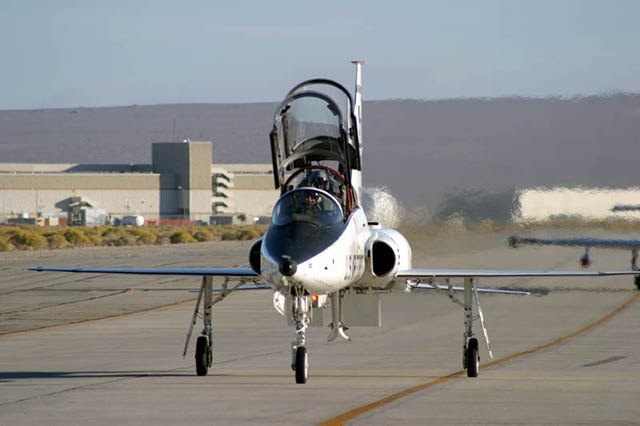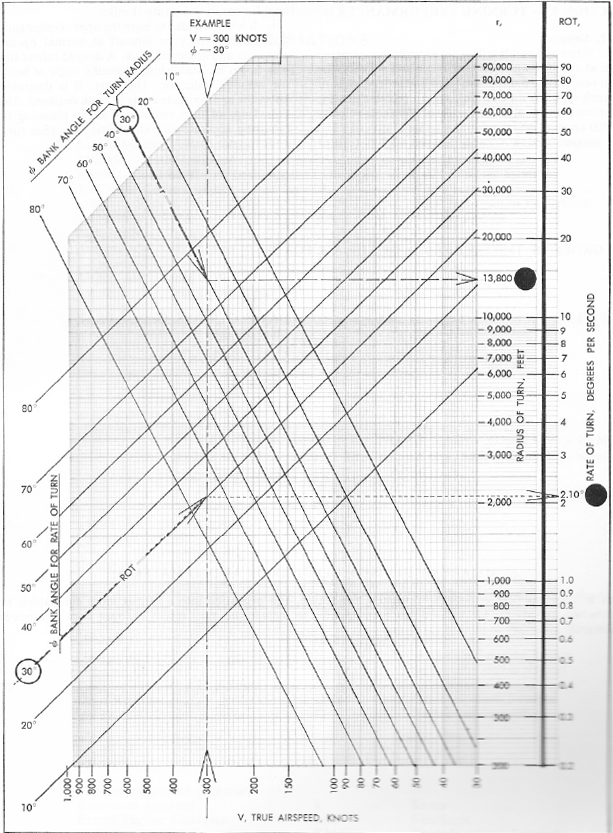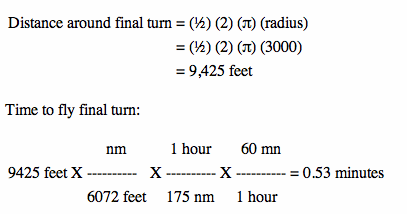The "final turn" in the T-38 ended up being final for several Air Force student pilots, it was an easy place to make an unrecoverable mistake. Over the years the Air Force has widened the pattern to make it safer, but it still demands a pilot's A-Game.
— James Albright
The last thirty seconds of your life
One of the unspoken truths during our six months flying the T-38 was known to everyone associated with the jet: the final turn could kill you. By the time I got to the airplane it was nearly nineteen years old and 138 aircraft had already been lost, killing 53 pilots. In our year, we lost eight aircraft and four pilots. One of the biggest common factors was the final turn.
It’s not that the final turn was especially difficult, it wasn’t. You began it by rolling to about 45 degrees of bank, you let the nose fall about 15 degrees, and then you pulled until the wings started to shake violently. Simple! They even gave you an angle of attack indicator to guide how much back pressure you applied to the stick.
I never got into one of those deadly sink rates on my way to earning the right to solo and it was looking like I had this tiger by the tail. Solo in the T-37 was a big deal, just like in the civilian world. The instructor judged your abilities one day and ordered you to pull off the runway while he hopped out. “Go up and show me three touch and goes,” he would say, “make be proud.” And you would do just that.
None of that in the adult world of the T-38: one day you show up and you are scheduled to fly without an instructor. “I think I’ll take the white rocket for a spin today,” you tell your buddies, “I feel the need for some AB.” And everyone would nod knowingly. Everyone has the need for some after burner now and then.
So it went until about my fifth or sixth solo ride when I heard the awful call from the runway supervisor, “final turn go around,” followed by “go around burners!” I was thirty seconds from killing myself and I didn’t know it.
I got another ride with an instructor to straighten that mess out. Satisfied I knew what I was doing, he signed me off. He was satisfied, but I wasn’t. Asking around the flight room, most guys said you knew you were in the deadly sink because the world started rushing up at you. But in the final turn you are at 45 degrees of bank and pulling so hard the wings buffet. How could you see that? Well, they said, just make sure your initial descent off the perch is right.
That made sense. I would fly to the perch, the last point in the pattern where you are at pattern altitude, roll the aircraft to 45 degrees of bank with absolutely no back pressure. Once the nose was around 15 degrees nose low I would pull. Is that right? “I dunno,” my instructor said, “you just get a feel for it.”
The only extra clue you had was a vertical velocity indicator which had a nine second delay to it. But if that indicator was way out of the ballpark at the halfway point, you would have the clue you needed to abort the maneuver and keep your pink skin intact. It would be helpful to know how much vertical velocity was right.
To figure all this out, I first needed the width of the traffic pattern. The T-38 overhead pattern begins at 300 knots and 1,000’ above the runway. You fly overhead the departure end of the runway and then roll to 60 degrees of bank and pull 2 G’s to reverse direction and bleed off enough speed to lower the landing gear, around 200 knots.
At 60 degrees of bank, starting with 300 knots and bleeding to 200 knots, turn radius is around 3,000 feet. The distance around the final turn is equal to one-half the turn circumference:
Therefore, the vertical velocity in the final turn should be 1,000 feet / 0.53 minutes, about 1,800 ft/min. My next few rides I saw around that, never less than 1,500 ft/min and never more than 2,000 fpm. So I never needed the technique to prevent another “go around burners!” call, but I always checked. I suppose, knowing what kind of descent was needed helped me start the descent correctly in the first place.
Postscript From the World of Big Airplanes
One year later, in the more genteel world of the KC-135A tanker, I would never again see a 1,800 ft/min descent in the traffic pattern. The vertical velocity seemed to be about half, but it was no longer in my cross-check.
In my two years flying the tanker there were four losses, but the final turn was never causal. As I moved on to the EC-135J, a Boeing 707, the tanker community continued to lose two aircraft a year, with the landing pattern sometimes to blame. An RC-135, another Boeing 707 variant, was lost while landing. The losses in our world of heavies were approaching those of the fighter community. The Air Force decided we would have to pay attention to these things. That included us in the outskirts of military aviation, as I would find out.
Five years later, during instructor pilot school, we had to diagram every maneuver, especially the visual pattern. It all became clear:

Visual pattern: fly a downwind displaced by 2 nm, turn base at 45°, descend 900 fpm, roll out at 600’, 2 nm from touchdown zone.






